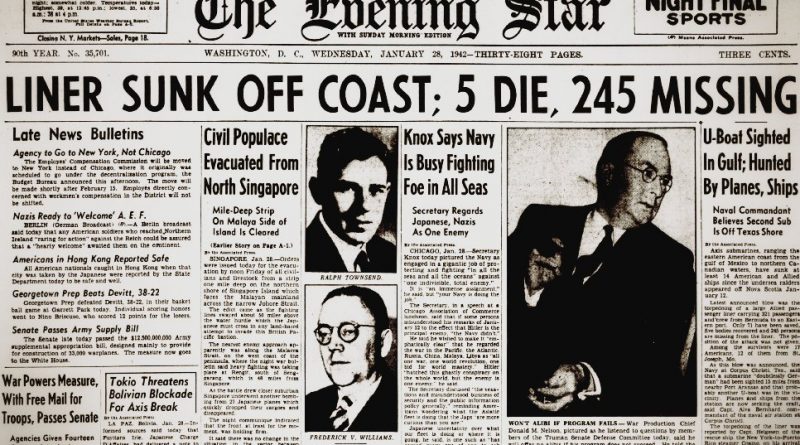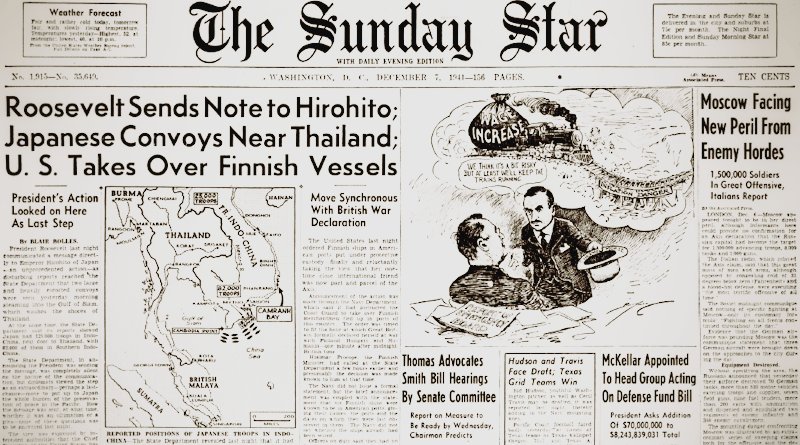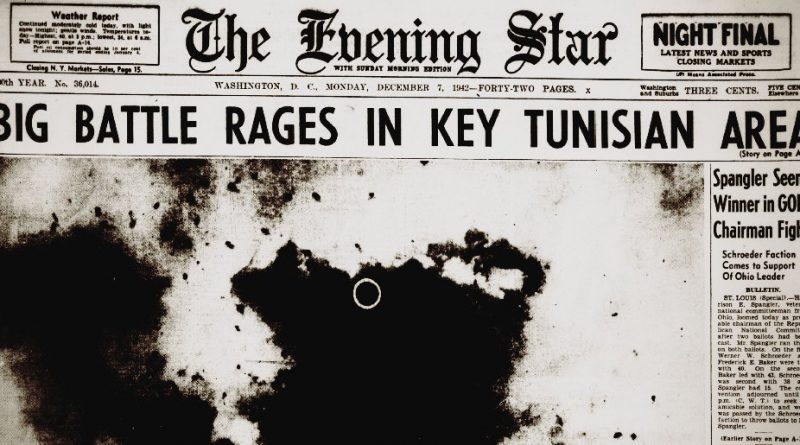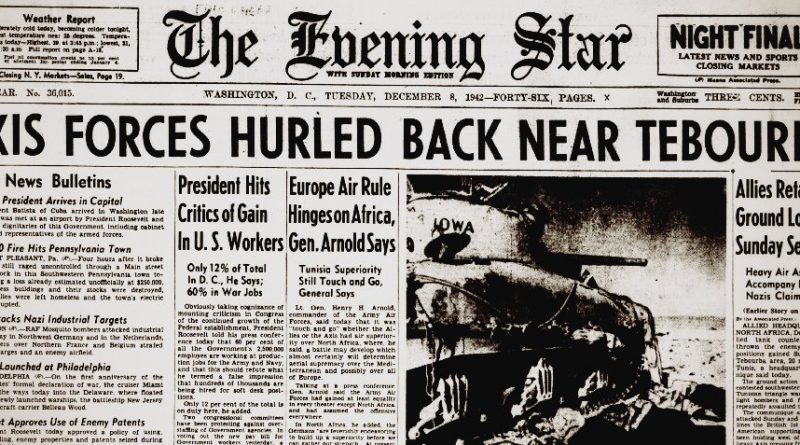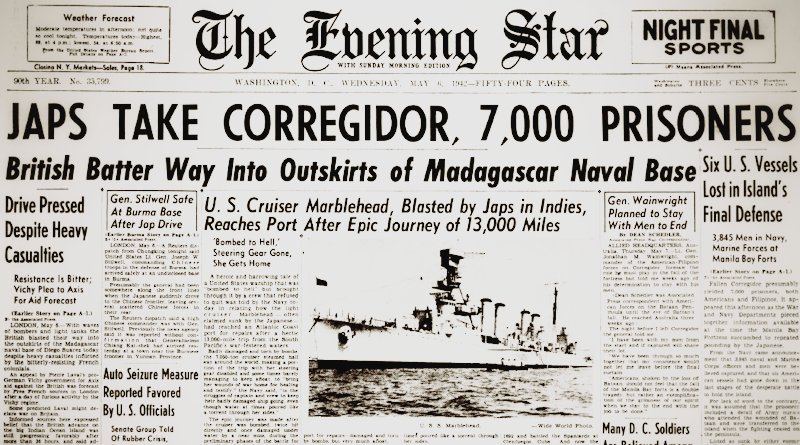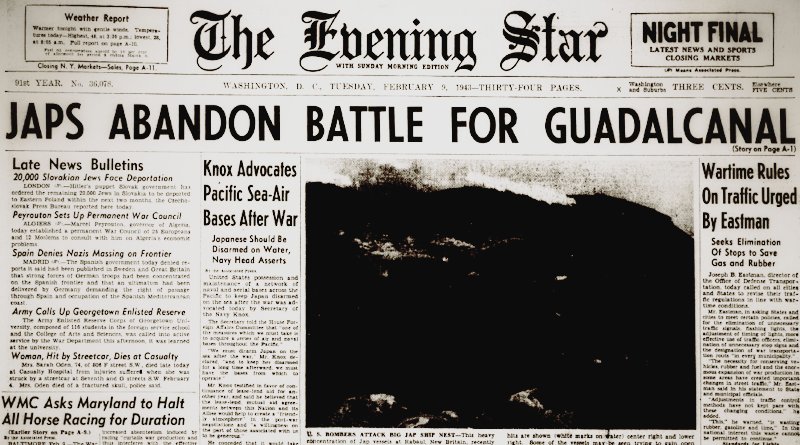World War II Chronicle: January 28, 1942
Click here for TODAY’S NEWSPAPER
The submarine USS Gudgeon (SS-211), which on 11 December became the first sub to depart Pearl Harbor for a war patrol, had just finished her watch off Japan’s Bungo Strait when the crew received an ULTRA message on 27 January reporting that three enemy submarines were operating in their area, 240 miles west of Midway.
Lt. Cmdr. Elton W. Grenfell soon spots a Japanese I-68-class submarine and fires three torpedoes, sinking I-73. Gudgeon becomes the first U.S. submarine to sink an enemy vessel during World War II.
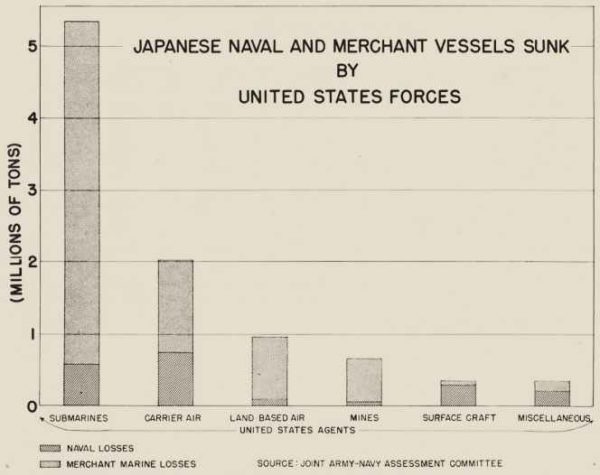
To date, Allied submarines, mines, surface ships, and warplanes have sunk 15 Imperial Japanese Naval vessels since the Pacific War began last month. American, Dutch, and British crews combined sent 22 Japanese merchant vessels to the bottom, totaling over 100,000 tons.
In fact, submarines account for the overwhelming majority of the 9.7 million tons of Japanese vessels sunk by the Americans during the war. When the men destined to become captains and admirals by January 1942 were learning strategy and tactics as midshipmen at the Naval Academy, they dreamed of becoming a modern-day Admiral Nelson, studying ship-on-ship surface engagements. But a generation later, the nature of naval warfare had evolved; the days of grand battleships ruling the seas had given way to less-glamorous but tremendously more economical submarines and aircraft.
A Gato-class submarine could be produced in ten months [1] for less than $2 million and required a crew of just 60 officers and men. By comparison, it took 19 months and $100 million to build the battleship USS Iowa (BB-61)[2], which required a 2,788-man crew. The aircraft carrier USS Essex (crew of 2,600) cost $78 million and took 20 months [3]. Fletcher-class destroyers (crew of 329) could be pumped out for $6 million in seven months [4]. Despite the tremendous investment in money and manpower, surface ships were just as effective as “miscellaneous” at sending enemy ships to the bottom.
In Savannah, Ga., the “Mighty” Eighth Air Force is activated on this day, Col. Asa N. Duncan commanding. The Eighth transfers to England in May and will begin combat operations on 17 November 1942.
And the sports section (page in question is not featured) briefly mentions that Ted Williams, who won the American League batting title by hitting .406 last year, had to miss an awards ceremony because the Minneapolis draft board told the Splendid Splinter that he could receive his Army induction notice at any time and he needed to stay close to home. Since Williams was his mother’s sole source of income, he had been classified 3-A before Pearl Harbor, but like many other Americans he was reclassified.
To a modern fan, one of baseball’s superstars needing to support his mother sounds odd, but Williams only made $18,000 in 1941 and $30,000 in 1942.
Instead of being drafted, Williams enlists in the Navy on 22 May 1942 and begins training to become an aviator in the Marine Corps after a spectacular 1942 season in which he wins the first of his two Triple Crowns. When Williams reports for ground school at Amhurst College, he is joined by rookie teammate Johnny Pesky, whose .331 batting average was second only to Williams in 1942.
The volunteer fireman on the top-left of page A-16 is former Brooklyn Dodger catcher Babe Phelps, who owns the record for the highest batting average for a catcher in the modern era (.367). Now with the Pittsburgh Pirates, 1942 will be his last season. Just to the left of Phelps’ picture is a fascinating analysis from Grantland Rice on how the war could affect the baseball standings.
Notes:
[1] Based on USS BARB, laid down 7 June 1941 and commissioned 8 July 1942.
[2] Laid down 27 June 1940, commissioned 22 February 1943.
[3] USS ESSEX laid down 28 April 1941, commissioned 31 December 1942.
[4] USS FLETCHER (DD-445) laid down 2 October 1941, commissioned 30 June 1942.
Evening star. (Washington, D.C.), 28 January 1942. Chronicling America: Historic American Newspapers. Lib. of Congress.
https://chroniclingamerica.loc.gov/lccn/sn83045462/1942-01-28/ed-1/
